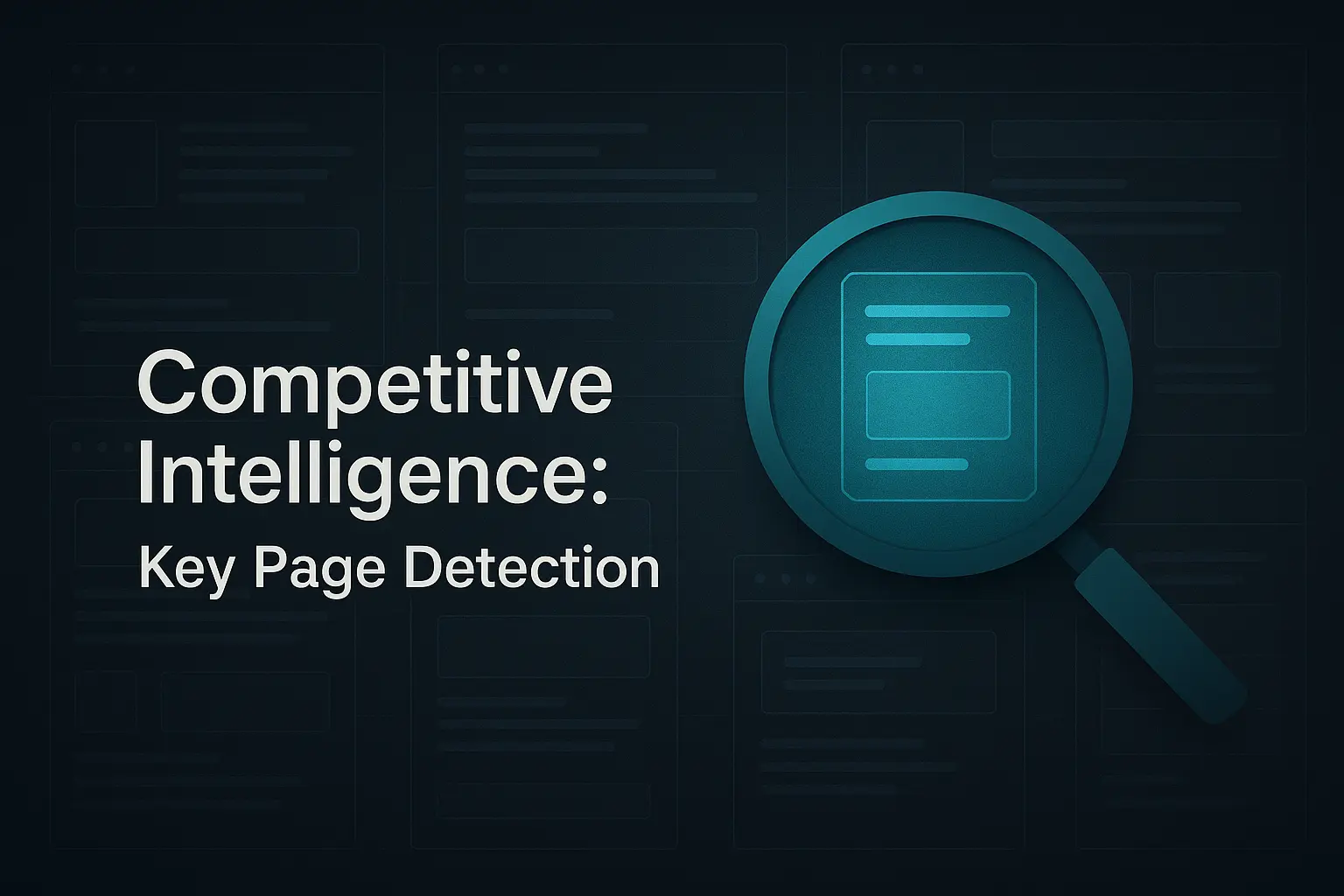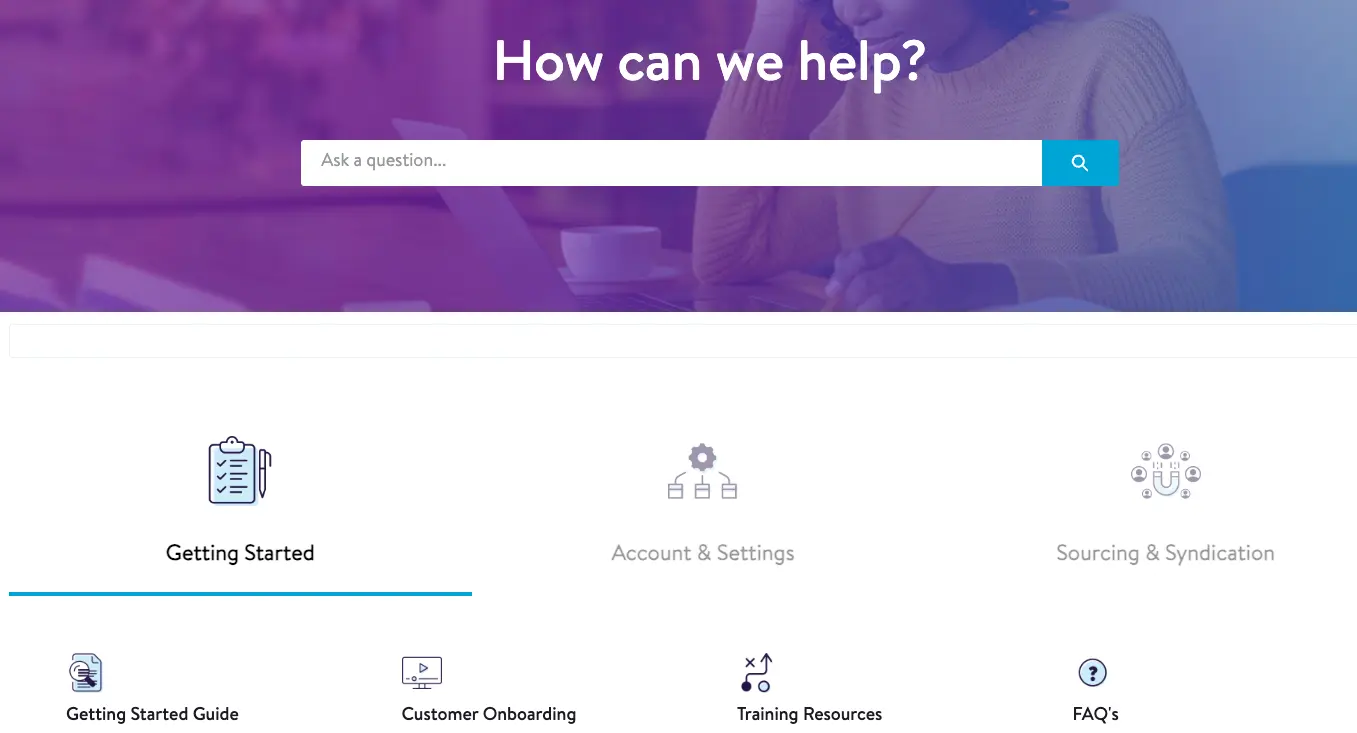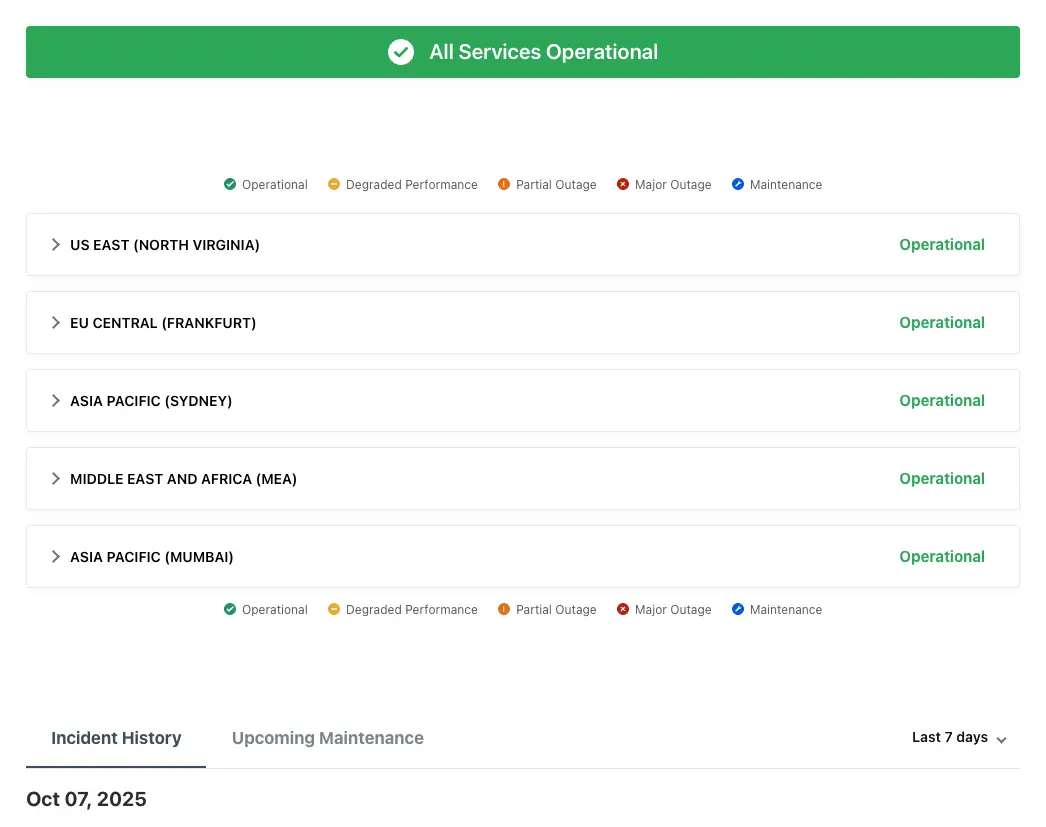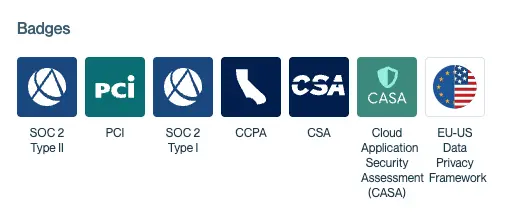
Competitive Intelligence: Key Page Detection
Competitive intelligence has gotten both easier, and harder, in the digital age. Easier, because companies intentionally share an abundance of information via their web footprint. Harder, because it's virtually impossible (or at least inadvisable) to try to keep up with it all using old-fashioned manual analysis of web content.
We have some thoughts on how to keep up (hint: click on our logo in the top-left), but for now, lets discuss the types of competitive intelligence that are readily available for most serious entrants... just by looking for eight key webpages that many competitors publicly and voluntarily share openly.
The Strategic Value of Key Website Pages
Although every company's webpage is unique and varied in structure, most software companies that have achieved any reasonable degree of scale, have some or most of the following types of pages.
1. Careers Page
Reveals hiring priorities, company growth, team size, and technical focus areas. A company hiring heavily for sales roles signals growth mode, while engineering-heavy hiring suggests product development phases.
When done well, you might even be able to reconstruct an external view of the company's roadmap:
I read through every single job posting on OpenAI's career page.
— Deedy (@deedydas) September 19, 2025
Here's everything they're working on and who they compete with. pic.twitter.com/PVHYgZhFb4
2. Features Page
Often the most detailed source of truth about actual product capabilities, beyond marketing fluff. Shows feature completeness, technical depth, and competitive positioning. Here, SuiteCompete thrives, not only by identifying the feature pages of companies you want to analyze, but also by taking a first shot at the Harvey Balls diagram. Here are some examples:
- Office Suites – Compare Microsoft, G Suite, & more
- Demo Creation Software – Product demo & walkthrough tools
- eSignature Solutions – International Compliance
- Writing Assistants – AI-Powered Writing Tools
You can easily do some competitive feature comparisons of your own, with SuiteCompete.
3. Support Page
Indicates customer service philosophy, sophistication of customer support capabilities, and documentation quality. If support amounts to a clickable link to an email address, or a embedded pageform to submit a support issue, that signals something different than if the support system is a full-fledged portal with knowledge base, AI agent, and ability to escalate to support personnel.

4. Website Status Page
Critical for understanding system reliability, incident response, and operational transparency. Companies with public status pages often demonstrate higher operational maturity. For example, the highest visibility portion of a status page for a modern B2B SaaS company, might look like this:

This is especially true for companies that serve middle market and enterprise clients, where it is common for Master Services Agreements (MSAs) to obligate service providers to demonstrating that they are achieving the agreed-upon uptime requirements. These are often specified in Service Level Agreements (SLAs) that are in Master Services Agreements, or in Statements of Work (SOWs).
5. Trust Center
Showcases security certifications, compliance standards, and data protection measures—crucial for enterprise software evaluation.
If the companies you are analyzing have any regulatory or standards body compliance obligations, there is a good chance that they've engaged a third party like Vanta, SafeBase, Conveyor, or SecurityPal as part of their compliance program. These types of third party providers, as part of their offering, often help their clients set up a Trust Center that summarizes the compliance programs that the client is successfully fulfilling. Think SOC 2, HIPAA, ISO 27001, GDPR, etc. In a Trust Center, compliance is often displayed (proudly!) in the form of badge section:

As with the other "key pages" mentioned in this post, it says something about a company when they do (or don't!) have this type of page.
6. Privacy Policy
Reveals data handling practices, geographic compliance considerations, and often indicates target market sophistication. Privacy Policies often reveal the viability of other claims made by the company. For example, virtually any company that claims to be GDPR compliant, should have certain mentions and explanations related to GDPR in their privacy policy. It would be difficult to imagine a case where a company is fully GDPR compliant, with a privacy policy that does not make reference to GDPR.

7. Terms of Use
Contains crucial information about service limitations, liability, and business model details that aren't highlighted in marketing materials. For example, companies who have government entities as clients, will often have specific treatment for those types of clients in their Terms of Service. If a company claims to have government clients, reading their Terms of Use carefully might either bolster your belief that their claim is correct, or make you skeptical of the claim.

8. Blog
Provides insights into company thought leadership, product roadmap hints, customer success stories, and market positioning over time. How recently has the company updated their blog? Their level of activity, and especially long spans of inactivity that run through present day, can be a terrific signal about the company's level of effort in digital marketing overall. Certainly, there can be exceptions such as companies that are incredibly active on numerous digital marketing fronts but have made a strategic decision to stop adding to their blog, but that type of decision would be the exception to the rule.
Can I Track Key Pages Manually?
Picture this scenario: You're evaluating five potential competitors. For each company, you need to understand their feature set, support model, hiring trends, and business practices. The traditional approach involves:
- Manually navigating to each company's website
- Hunting through navigation menus for relevant pages
- Bookmarking dozens of URLs across multiple browsers
- Trying to remember where you found specific information
- Repeating this process for every new competitor you discover
This manual approach is not only time-consuming but also prone to inconsistency, and unrealistic for a recurring process -- or even a detailed one-time analysis.
Automation Lends a Hand
Having quick, organized access to these key pages transforms competitive analysis from a time-consuming hunt into a systematic evaluation process. Here's why this matters:
Speed to Insight
Instead of spending 30 minutes per competitor just finding relevant pages, you can dive straight into analysis. This efficiency allows you to evaluate more competitors in less time, broadening your competitive landscape understanding.
Consistency Across Analysis
When key pages are automatically detected and organized, you ensure that every competitor receives the same level of scrutiny. No more accidentally overlooking a competitor's comprehensive security certifications because you couldn't find their trust center.
Comprehensive Coverage
Automated detection often uncovers pages you might have missed manually. Many companies organize their websites differently, and what one calls a "Trust Center," another might label as "Security" or "Compliance."
Historical Tracking
With systematic page detection, you can track changes over time. When a competitor launches a new status page or significantly updates their features page, you'll notice these strategic shifts quickly.
The Bottom Line: Work Smarter, Not Harder
Competitive intelligence is about making informed decisions quickly. In fast-moving software markets, the companies that can analyze and respond to competitive changes fastest often gain decisive advantages.
By automating the detection and organization of key website pages, you eliminate the tedious groundwork and jump straight to strategic analysis. You spend less time hunting for information and more time understanding what that information means for your business.
The next time you need to analyze a new competitor, ask yourself: Am I spending my time on manual page-hunting, or am I focusing on the insights that will drive my strategy forward?
Getting Started with Systematic Competitive Analysis
Ready to streamline your competitive intelligence process? Start by:
- Identifying your key competitors - Don't just focus on direct competitors; include adjacent solutions your customers might consider
- Establishing consistent evaluation criteria - Decide which pages and information types are most valuable for your specific needs
- Leveraging automation tools - Use platforms like SuiteCompete to handle the repetitive detection work
- Creating regular review cycles - Set up systematic reviews to catch competitive changes as they happen
Remember, in competitive intelligence, the goal isn't just to gather information—it's to gather the right information efficiently so you can act on insights while they're still relevant. Ready to get started? We're standing by to help!.
